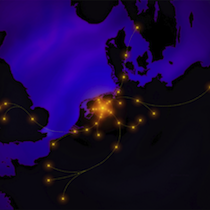tkp.quality – Data-quality control¶
Data-quality checking related code.
The quality checks are described in the LOFAR Transients Key Science Project Quality Control Document V1.1 and on the wiki.
tkp.quality.restoringbeam¶
-
tkp.quality.restoringbeam.beam_invalid(semibmaj, semibmin, theta, oversampled_x=30, elliptical_x=2.0)[source]¶ Are the beam shape properties ok?
Parameters: semibmaj/semibmin – size of the beam in pixels Returns: True/False
-
tkp.quality.restoringbeam.highly_elliptical(semibmaj, semibmin, x=2.0)[source]¶ If the beam is highly elliptical it can cause source association problems within TraP. Again further testing is required to determine exactly where the cut needs to be.
Parameters: Semibmaj/semibmin – describe the beam size in pixels Returns: True if the beam is highly elliptical, False otherwise
-
tkp.quality.restoringbeam.infinite(smaj, smin, bpa)[source]¶ If the beam is not correctly fitted by AWimager, one or more parameters will be recorded as infinite.
Parameters: - smaj – Semi-major axis (arbitrary units)
- smin – Semi-minor axis
- bpa – Postion angle
-
tkp.quality.restoringbeam.not_full_fieldofview(nx, ny, cellsize, fov)[source]¶ This has been raised as an interesting test, as if the full field of view (FOV) has not been imaged we may want to image the full dataset. The imaged FOV information can be estimated using the number of pixels and the size of the pixels.
Parameters: - nx – number of pixels in x direction
- ny – number of pixels in y direction
Returns: True if the full FOV is imaged, False otherwise
-
tkp.quality.restoringbeam.oversampled(semibmaj, semibmin, x=30)[source]¶ It has been identified that having too many pixels across the restoring beam can lead to bad images, however further testing is required to determine the exact number.
Parameters: Semibmaj/semibmin – describe the beam size in pixels Returns: True if beam is oversampled, False otherwise
tkp.quality.brightsource¶
-
tkp.quality.brightsource.check_for_valid_ephemeris(measures)[source]¶ Checks whether the ephemeris data in use by
measuresis valid.measuresshould already have a valid reference frame.
-
tkp.quality.brightsource.is_bright_source_near(accessor, distance=20)[source]¶ Checks if there is any of the bright radio sources defined in targets near the center of the image.
Parameters: - accessor – a TKP accessor
- distance – maximum allowed distance of a bright source (in degrees)
Returns: False if not bright source is near, description of source if a bright source is near
tkp.quality.rms¶
-
tkp.quality.rms.rms_invalid(rms, noise, low_bound=1, high_bound=50)[source]¶ Is the RMS value of an image outside the plausible range?
Parameters: - rms – RMS value of an image, can be computed with tkp.quality.statistics.rms
- noise – Theoretical noise level of instrument, can be calculated with tkp.lofar.noise.noise_level
- low_bound – multiplied with noise to define lower threshold
- high_bound – multiplied with noise to define upper threshold
Returns: True/False
tkp.quality.statistics¶
functions for calculating statistical properties of LOFAR images
-
tkp.quality.statistics.clip(data, sigma=3)[source]¶ Remove all values above a threshold from the array. Uses iterative clipping at sigma value until nothing more is getting clipped. :param data: a numpy array
-
tkp.quality.statistics.rms(data)[source]¶ Returns the RMS of the data about the median. :param data: a numpy array
-
tkp.quality.statistics.rms_with_clipped_subregion(data, sigma=3, f=4)[source]¶ returns the rms value of a iterative sigma clipped subsection of an image :param data: A numpy array :param sigma: sigma value used for clipping :param f: determines size of subsection, result will be 1/fth of the image size
